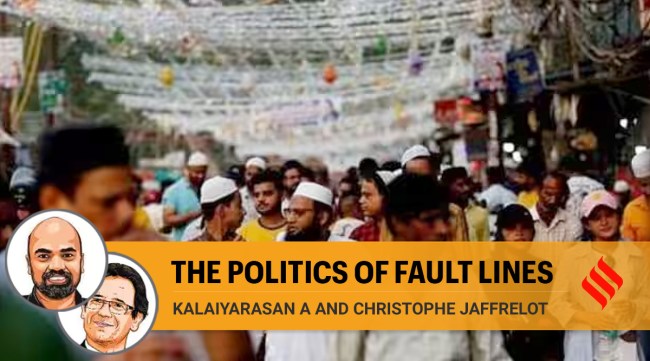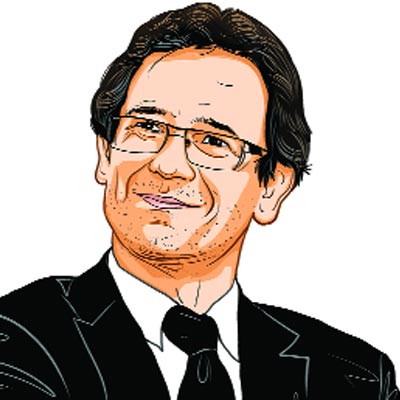Opinion BJP’s Pasmanda Muslim outreach: It’s not as divided as you think
The Muslim community is less differentiated within, along class and caste lines. But they experience clear collective deprivation
 In sum, Muslims are less differentiated along class and caste lines than Hindus: While Hindus form an extremely unequal community, with upper castes being very resilient net gainers, Muslims are experiencing collective deprivation.
In sum, Muslims are less differentiated along class and caste lines than Hindus: While Hindus form an extremely unequal community, with upper castes being very resilient net gainers, Muslims are experiencing collective deprivation. A couple of months ago, in his address to BJP workers in Bhopal, Prime Minister Narendra Modi emphasised that the party’s outreach to poor Muslims could take advantage of the “extreme exploitation of backward Pasmanda Muslims” by upper-caste Muslims and the parties playing the game of vote bank politics. This speech and the recent co-option of Pasmanda Muslims by the BJP have renewed the debate on caste among Muslims in India. While one cannot deny or disown the persistence of caste among Indian Muslims, in terms of socio-economic inequality, it is much less significant than among Hindus.
There are three broad groupings of Muslim castes — Ashrafs, Ajlafs and Arzals — which approximate to upper castes, OBCs and Dalits respectively. However, Dalit Muslims don’t self-identify as Scheduled Castes in survey data as they don’t enjoy reservation. Their castes are usually listed in the OBC category. OBCs constitute about 60 per cent of Indian Muslims, followed by 38 per cent of upper castes and the remaining 2 per cent constitute SC/STs. These groups, however, are unevenly distributed geographically. Pasmandas, comprising OBCs and Dalits, constitute 76 per cent of Muslims in UP and Bihar, for instance.
Drawing on the latest All India Debt and Investment Survey (AIDIS) and Periodic Labour Force Survey (PLFS), we use multidimensional variables — wealth consumption, access to jobs and educational attainment — to evaluate social inequalities among Indian Muslims and to compare them with the situation prevailing among Hindus.
The average per capita wealth among Hindu upper castes was Rs 8,64,984 in 2019, as against Rs 4,27,149 for OBCs, and Rs 2,28,437 for Dalits. The figures for upper-caste Muslims and OBCs were Rs 3,43,014 and Rs 3,10,922, respectively. In other words, on average, the wealth of Hindu upper castes was more than three times that of Dalits and twice that of OBCs, while this gap was just 10 per cent among Muslims. In Bihar, where Pasmanda Muslims are in large numbers, wealth inequality among Muslims is insignificant — just 2 per cent — and in Madhya Pradesh, Pasmanda Muslims do better than Ashrafs in wealth accumulation by 14 percentage points. By contrast, the gap is 43 per cent in UP, where there are remnants of landed Muslim aristocracy. However, if we compare the wealth gap among the Hindus of UP, on average, the Hindu upper castes own almost twice as much wealth as OBCs and three times as much as Dalits.
A similar trend can be observed in consumption, too. In 2021-22, the average per capita monthly expenditure among the Muslim upper castes was Rs 2,180, as against Rs 2,151 among Pasmandas, a margin of 1.4 per cent. The corresponding figures for Hindus were quite different: Upper castes, with Rs 3,321, consumed 40 per cent more than OBCs (Rs 2,180) and 57 per cent more than Dalits (Rs 2,122). The gap among Muslims was rather small in UP (6.2 per cent) and Bihar (10 per cent), while it stood at, respectively, 48 per cent for the Hindu upper castes vis-à-vis OBCs and 60 per cent vis-à-vis Dalits in UP, and 27 per cent and 48 per cent in Bihar.
In terms of educational attainment too, Ashrafs and Pasmandas are not so different. In 2021-22, the percentage of upper caste Muslim youth (18 to 23 years) attending higher educational institutions was the same as the Pasmandas: 19.8 per cent. By contrast, the percentage of Hindu youth in higher education among upper castes was as high as 46.5 per cent, while it was 36 per cent for OBCs and 26 per cent for Dalits. Interestingly, in UP and Madhya Pradesh, Pasmandas do even better than their upper-caste counterparts. In fact, in UP, Muslim upper castes are experiencing negative growth in educational attendance. As a result, their enrollment came down to 12 per cent in 2021-22, as against 14 per cent in 2011-12 — an unprecedented development in the history of India so far as we know, simply because every group, so far, has experienced greater access to higher education.
Muslims’ lower access to education gets reflected in access to regular jobs. The percentage of salaried workers among Muslims is 19.3 per cent as against 21.5 per cent for Hindus. But, again, there is no difference between Muslim upper castes and Pasmandas. In contrast, the percentage of salaried workers among Hindu upper castes is 33 per cent as against 19.9 per cent for Hindu OBCs and 21.5 per cent for Dalits. In states such as UP, Bihar, Rajasthan, Maharashtra, Andhra Pradesh and Karnataka, Pasmanda Muslims do better than their upper-caste counterparts, whereas Hindu upper castes still control most of the coveted jobs.
In sum, Muslims are less differentiated along class and caste lines than Hindus: While Hindus form an extremely unequal community, with upper castes being very resilient net gainers, Muslims are experiencing collective deprivation. That said, BJP leaders may still “divide and rule” Muslims by co-opting Pasmandas — the way they have done with Shias and Bohras — as well as by exploiting status-related faultlines, which remain strong even if class-based distinctions are much less visible than on the Hindu side. In UP, during the recent local body elections, the BJP nominated 395 Muslim candidates and 61 won. Three-fourths of these 395 candidates were Pasmandas. By contrast, in the previous local elections, the party had fielded only 180 Muslim candidates, with only one winning.
Kalaiyarasan is assistant professor at the Madras Institute of Development Studies, Chennai. Jaffrelot is a senior research fellow at CERI-Sciences Po/CNRS, Paris, professor of Indian Politics and Sociology at King’s India Institute, London







